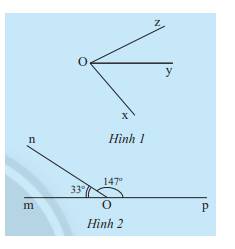true or false 1, If Ox and Oy are opposite rays then \(\widehat{xOy=180^o}\)2,If Ox and Oy are parallel then \(\widehat{xOy}=180^o\) or \(\widehat{xOy}=0^o\)3, If \(\widehat{xOy}=90^o\) then \(\widehat{xOy}\) is a straight angle4, If \(\widehat{xOy}\) +\(\widehat{yOz}=180^o\) then \(\widehat{xOy}\) and \(\widehat{yOz}\) are complementary5, If \(\widehat{xOy}\) is larger than \(\widehat{xOz}\) then \(\widehat{xOz}\) is an acute angle6, the lagest angle which is form by two rays is an obtuse...
Đọc tiếp
true or false
1, If Ox and Oy are opposite rays then \(\widehat{xOy=180^o}\)
2,If Ox and Oy are parallel then \(\widehat{xOy}=180^o\) or \(\widehat{xOy}=0^o\)
3, If \(\widehat{xOy}=90^o\) then \(\widehat{xOy}\) is a straight angle
4, If \(\widehat{xOy}\) +\(\widehat{yOz}=180^o\) then \(\widehat{xOy}\) and \(\widehat{yOz}\) are complementary
5, If \(\widehat{xOy}\) is larger than \(\widehat{xOz}\) then \(\widehat{xOz}\) is an acute angle
6, the lagest angle which is form by two rays is an obtuse angle
7, Two acute angles cannot be supplementary
8,\(\widehat{xOy}\) and \(\widehat{yOz}\) are adjacent
9, if \(\widehat{xOy}\) and \(\widehat{zOy}\)are supplementary then one of them must be an obtuse angle
10,if \(\widehat{xOy}\) and \(\widehat{yOz}\) are adjacent then \(\widehat{xOy}\) > \(\widehat{xOz}\)
11, If Ox lies between Oy and Oz then \(\widehat{xOy}\) and \(\widehat{yOz}\) are adjacent


